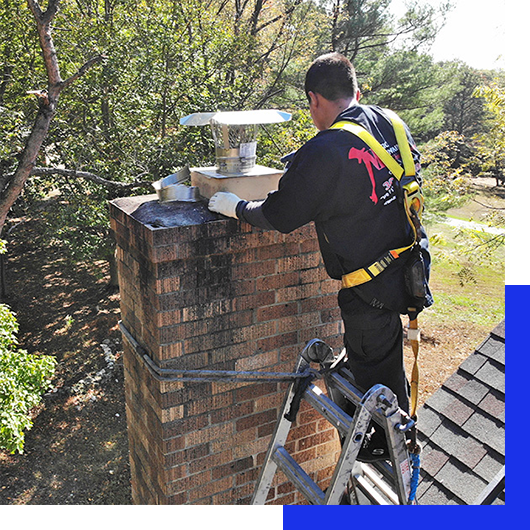What Is Considered Commercial Roofing? A New Jersey Expert Breakdown
What Is Considered Commercial Roofing? A New Jersey Expert Breakdown
When it comes to safeguarding a commercial property, one of the most critical components is often overlooked until it starts leaking: the roof. But what exactly is considered commercial roofing—and how does it differ from the residential rooftops dotting neighborhoods across New Jersey?

With Charles Jimerson of CJ Commercial Roofing NJ, we’ll unpack the technical definition, common types, legal considerations, and regional specifics of commercial roofing. Whether you own a retail space in Newark, manage an industrial park in Edison, or oversee a healthcare facility in Jersey City, understanding the nuances of commercial roofing is key to long-term property performance and compliance.
What Is Considered Commercial Roofing?
Commercial roofing refers to any roofing system installed on a non-residential building, including structures like office complexes, warehouses, retail stores, apartment buildings (above a certain size), schools, and hospitals. These systems are engineered to cover larger square footage, support heavy equipment (like HVAC systems), and withstand intense environmental exposure.
Unlike residential roofing—which typically involves pitched roofs with asphalt shingles—commercial roofs are often flat or low-sloped and made from materials designed for durability and easy maintenance.
Key Salient Entities in Commercial Roofing:
- EPDM (Ethylene Propylene Diene Monomer)
- TPO (Thermoplastic Polyolefin)
- PVC Roofing
- Modified Bitumen
- Built-Up Roofing (BUR)
- Metal Panels
- Green Roofing Systems
Common Types of Commercial Roofs in New Jersey
Given New Jersey’s climate, which includes cold, snowy winters and hot, humid summers, selecting the right roofing system is essential. Here’s a breakdown of popular choices across New Jersey counties like Bergen, Monmouth, and Middlesex:
1. EPDM Rubber Roofing
Durable and cost-effective, EPDM roofing is a favorite for flat roofs throughout Trenton and Atlantic City. Its flexibility and UV resistance make it ideal for buildings that experience temperature swings.
2. TPO Roofing Systems
Popular in modern commercial developments across Hoboken and Morristown, TPO is known for energy efficiency due to its white reflective surface that helps reduce cooling costs—an important feature for LEED-certified buildings.
3. PVC Roofing
PVC offers chemical resistance, making it ideal for restaurants, labs, and manufacturing facilities in Newark’s industrial zones. Its welded seams add extra protection against leaks.
4. Built-Up Roofing (BUR)
An older but reliable method, BUR layers multiple plies of asphalt and fabric, topped with gravel. This system is still used in many older commercial buildings in Elizabeth and Paterson.
For professional needs, just visit CJ Commercial Roofing NJ.
Key Differences Between Residential and Commercial Roofing
While both roofing systems serve the same core purpose—protecting the building from the elements—the differences in design, application, and regulation are significant.
| Feature | Commercial Roofing | Residential Roofing |
|---|---|---|
| Slope | Flat or low slope | Steep slope |
| Materials Used | TPO, EPDM, PVC, BUR, metal | Asphalt shingles, wood, tile |
| Installation Complexity | High – requires specialized crews | Moderate – often smaller crews |
| Maintenance Needs | Frequent inspections recommended | Periodic, less frequent |
| Lifespan | 20–30 years (depending on system) | 15–25 years |
Why It Matters for Property Owners in New Jersey
In New Jersey, where building codes and climate demands are strict, choosing the correct roofing system can significantly impact:
- Energy efficiency (helping to lower utility bills)
- Compliance with state and local building codes
- Insurance eligibility
- Long-term cost savings
- Storm preparedness and flood resistance, especially important in coastal regions like Cape May and Atlantic Highlands
💡 Fun fact: According to the New Jersey Department of Community Affairs, commercial buildings with roofing areas exceeding 10,000 square feet often require state-level code review for fire safety, load-bearing capacity, and insulation performance.
Local Regulations and Licensing Requirements
In the Garden State, commercial roofing contractors must adhere to strict licensing and insurance standards. Whether you’re based in Cherry Hill or Hackensack, it’s vital to ensure your roofer:
- Is licensed and bonded
- Holds a current NJ Home Improvement Contractor license (yes, even for commercial!)
- Carries general liability and worker’s compensation insurance
- Follows NJ Uniform Construction Code(UCC) guidelines
In urban hubs like Jersey City, where building density increases fire risks, flat roofs may also be required to include fire-retardant membranes or vegetative roofing systems to improve safety and sustainability.
The Cost Factor: How Much Does Commercial Roofing Cost in NJ?
While cost varies based on size, materials, and labor, commercial roofing in New Jersey generally ranges between $6 to $12 per square foot. Here’s a ballpark range by material:
- TPO: $5.50 – $8.50/sq ft
- EPDM: $6 – $10/sq ft
- PVC: $7 – $12/sq ft
- Metal Roofing: $10 – $18/sq ft
- BUR: $4.50 – $9/sq ft
Larger projects in cities like Princeton or New Brunswick may also incur additional engineering and inspection fees, particularly when solar panels or HVAC platforms are integrated.
Emerging Trends in Commercial Roofing (Especially in NJ)
As sustainability becomes a central concern for building owners, the roofing industry is responding. Some notable trends shaping New Jersey’s commercial roofing market include:
- Green roofing and vegetative systems (common in Hoboken’s eco-focused developments)
- Cool roofing technologies to combat urban heat islands
- Integrated solar roofing for warehouses and public buildings
- Drone-assisted inspections to improve safety and documentation
Choosing the Right Commercial Roofing Contractor in NJ
It’s not just about materials—it’s about the team you trust. When selecting a commercial roofer in New Jersey, consider these key questions:
- Do they have verifiable experience with your roof type?
- Are they familiar with local codes in your municipality?
- Can they provide maintenance plans post-installation?
- Are they certified by major roofing system manufacturers like GAF or Carlisle SynTec?
Locally renowned companies in Newark, Edison, and Toms River often stand out because of their reputation for fast emergency repairs, solid warranties, and code compliance expertise.
Final Thoughts: Why Knowing Commercial Roofing Matters
Understanding what is considered commercial roofing is essential for any property stakeholder in New Jersey. From regulatory compliance and energy efficiency to safety and long-term value, the roof you choose (and how it’s maintained) plays a crucial role in your property’s performance and resale potential.
If you’re planning a roof replacement or new installation in New Jersey, consult with a certified commercial roofing specialist who can evaluate your building’s unique needs, guide material selection, and ensure seamless integration with your infrastructure and code requirements.









